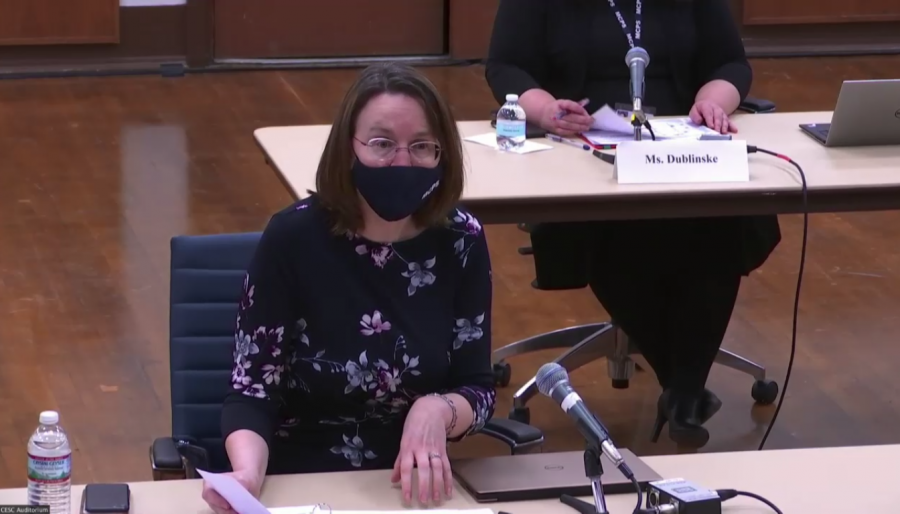MCPS proposes alternative to 2021-2022 school calendar
Photo courtesy of MCPS BOE meeting
MCPS associate superintendent Essie McGuire speaks at a board meeting on March 9th. Board members will meet on March 23rd to finalize the new schedule.
March 16, 2021
Last year, The Observer wrote an article on the number of days of school for the upcoming year. In that article, it was noted that MCPS had significantly reduced the number of days off, while keeping start and end dates around the same. This year, MCPS went in a different direction: starting and ending school very early.
To effectively compare schedules across different years, The Observer has added up the number of days off for each MCPS school year since 2013. Each day off counts as one point, and each half-day counts as a half-point.
From the 2013-14 school year to the 2016-17 school year, MCPS kept their calendar mostly the same. Each of the four years in that span had around 27 days off during the school year. School also started before Labor Day, giving MCPS more time during the school year to accommodate for the large amount of time off of school.
In 2016, Maryland Gov. Larry Hogan signed an executive order that forced schools to start after Labor Day, giving students an extended summer break. This allowed for longer family vacations (which was the purpose of the law, to take in more revenue on beaches like Ocean City). However, this shortened the school year, lowering the allotted number of days off of school.
“I’m not sure how I felt about [the executive order]. It did give me more summer, but it made school end very late,” WCHS junior Mason Goldstein said.
After signing the executive order, MCPS’ schedule score plummeted. The number of days off went from around 27 to 22 days during the 2017-18 school year.
However, MCPS listened to the negative public opinion and increased the number of days off school to 30 days in the 2020-21 school year, a mark higher than the previously established 27 days in 2019-20.
This year, the Board of Education has approved two calendar proposals for the 2021-2022 school year, with a final vote coming on March 23. Both are very similar to the 2020-21 calendar.
The first proposal has a schedule score of 30 days. It would start on Aug. 30, similar to the Aug. 31 start date of the 2020-21 calendar year, and end on June 15, also similar to the 2020-21 calendar ending on June 16.
The second proposal has a schedule score of 26.5 days. Class would start on Sept. 8, about a week after the first proposal, and end on June 22.
Both calendars are extremely similar, having 182 totals days and having off for the same holidays. The major differences are spring break, six days off for the first proposal and seven days for the second, and the start/end dates.
Created in March of this year, this calendar proposal was formed later than normal. In 2019, the calendar for the next year was adopted in December.
“We’ve delayed the work on the new calendar because of the evolving situation,” MCPS Superintendent Dr. Jack Smith said at the March 9 Board of Education meeting.
Many in the WCHS community have an opinion on which proposal is best. MCPS wants to choose the best schedule for everyone and has a survey open to help the BOE pick. Students and parents can vote before the next meeting held on March 23 at https://bit.ly/3cAlGxV.
The online survey allows students to take action in their community in a way that directly affects them. WCHS students should advocate for a proposal that suits their individual needs along with the needs of the student body.
“The survey will let me help choose which schedule I want, something I think can help students feel like they have a voice,” Goldstein said.
Although progress on the new calendar was delayed, MCPS is excited to adopt a calendar for a year that is undoubtedly going to look different from any year in the past. The pandemic has changed everything, and it’s going to take a great calendar to get students back into school full time.
“There’s a lot of hope in the new calendar,” Smith said.


